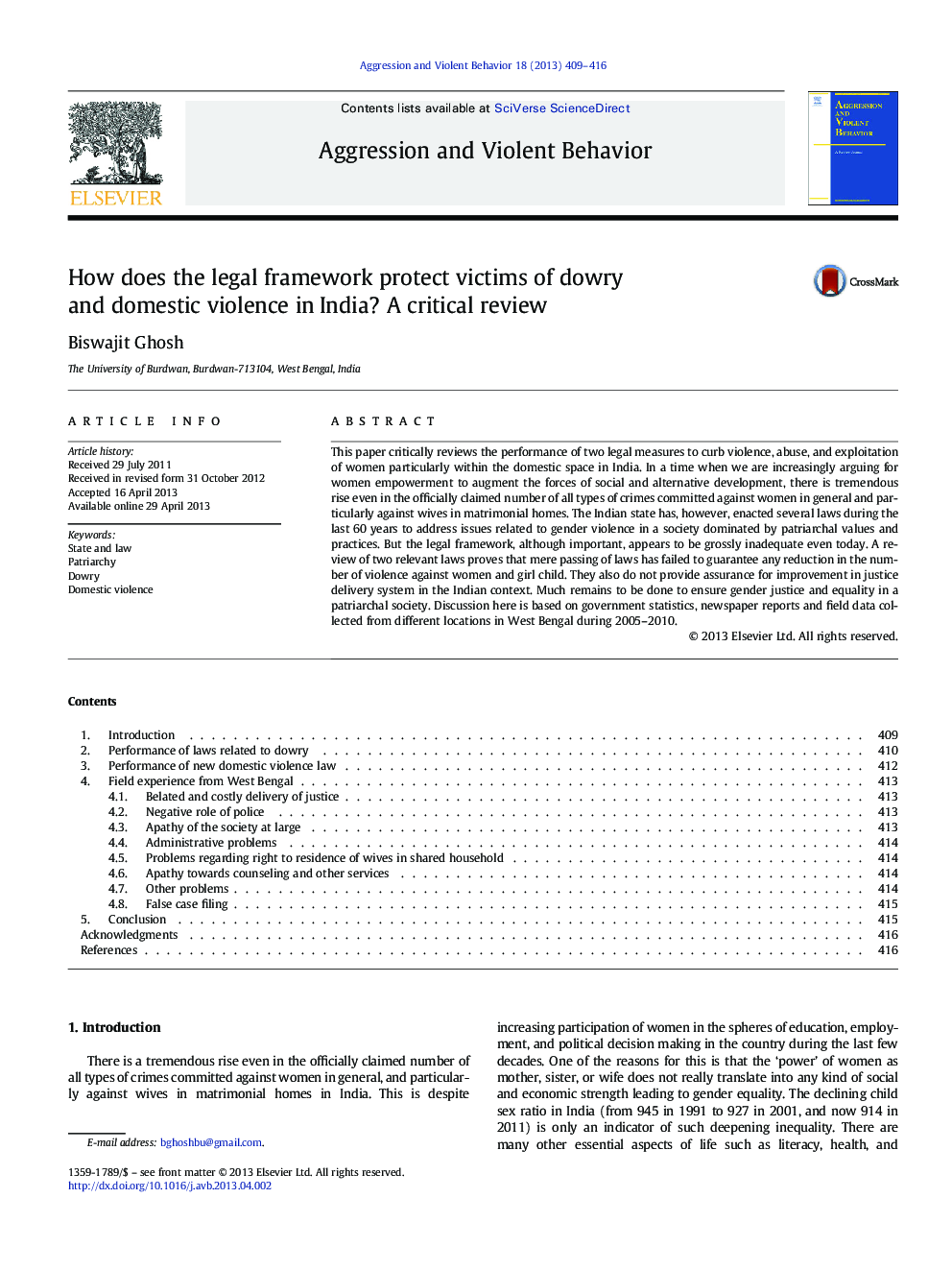| Article ID | Journal | Published Year | Pages | File Type |
|---|---|---|---|---|
| 94716 | Aggression and Violent Behavior | 2013 | 8 Pages |
•The anti-dowry laws in India are largely ignored and weakly enforced.•These laws also do not challenge the patriarchal institutions and value structure.•The PWDVA, with many positive features, is an exception to the laws framed in India.•Yet, there are social, economic, administrative, and legal obstacles to implement it.•The legal framework, although important, is inadequate to check violence against wives.
This paper critically reviews the performance of two legal measures to curb violence, abuse, and exploitation of women particularly within the domestic space in India. In a time when we are increasingly arguing for women empowerment to augment the forces of social and alternative development, there is tremendous rise even in the officially claimed number of all types of crimes committed against women in general and particularly against wives in matrimonial homes. The Indian state has, however, enacted several laws during the last 60 years to address issues related to gender violence in a society dominated by patriarchal values and practices. But the legal framework, although important, appears to be grossly inadequate even today. A review of two relevant laws proves that mere passing of laws has failed to guarantee any reduction in the number of violence against women and girl child. They also do not provide assurance for improvement in justice delivery system in the Indian context. Much remains to be done to ensure gender justice and equality in a patriarchal society. Discussion here is based on government statistics, newspaper reports and field data collected from different locations in West Bengal during 2005–2010.
